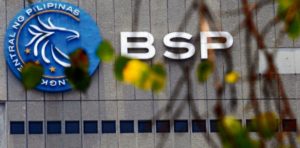MANILA, Philippines—The peso’s depreciation in the previous month happened amid broad US dollar strength driven by sentiments on the potential spread of the more contagious Delta variant of SARS Cov2, the virus that causes COVID-19, and a more hawkish tone by the US Federal Reserve.
The head of the Bangko Sentral ng Pilipinas (BSP) on Thursday (July 29) said the rise in dollar demand, gradual reopening of the economy and Fitch Rating’s outlook downgrade also added pressure on the local currency.
“Recent movements of the peso are reflective of shifts in demand and supply conditions in the foreign exchange market as well as emerging external and domestic developments,” BSP Governor Benjamin Diokno said at an online briefing.
He pointed out that the peso is not the only currency to weaken against the dollar as the exchange rate trend continues to be broadly in line with regional peers.
On a year-to-date basis, the peso depreciated against the US dollar by 4.62 percent to close at ₱50.35:$1 on July 21, 2021 from the end-December 2020 closing rate of ₱48.02:$1.
Most regional currencies have similarly depreciated against the dollar, as they have been weighed down by prospects of earlier US monetary policy normalization and uncertainties in their growth outlook due to the ongoing health crisis.
“While short-run fluctuations in the peso are affected by market sentiment, its medium- to long-term movements are largely supported by economic fundamentals as indicated by the relative stability in the movement of the real effective exchange rate of the peso,” Diokno said.
Looking ahead, the BSP expects the peso to be supported by structural foreign exchange inflows like overseas Filipino remittances, business process outsourcing receipts and eventually by earnings from tourism activities. Inflows related to foreign direct investments are also expected to help shore up the currency.
The regulator said that the latest outlook on the external sector for 2021-2022 suggests improvements in these sources of foreign exchange based on the better-than-expected outlook on global economic prospects as well as the gradual recovery in the domestic economy.
BSP projections as of the second quarter of 2021 show that net foreign direct investment inflows could reach $7.5 billion in 2021, slightly higher than actual inflows in 2020.
A rebound in other important foreign exchange sources is also expected, as cash remittances are predicted to grow by 4 percent in 2021 as compared with the 0.8 percent decline in 2020.
Business process outsourcing industry receipts are expected to grow by 5 percent in 2021 from the 1.3 percent dip in 2020, and tourism receipts will likely grow by 15 percent this year, helped by base effect coming from its 79.5 percent dive in 2020.
Diokno said the BSP remains committed to a flexible exchange rate system. At the same time, the regulator will continue to rely on a set of measures to cushion the impact of sharp peso movements like maintaining a healthy level of foreign exchange reserves as a buffer, reviewing and calibrating existing macro-prudential measures.
Complementary and targeted measures, including the BSP’s liquidity enhancing and management tools like the US dollar repo facility, exporters’ dollar and yen rediscounting facilities, and the enhanced Currency Rate Risk Protection Program, will likewise help support the peso, Diokno said.


